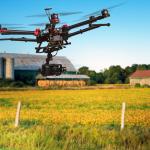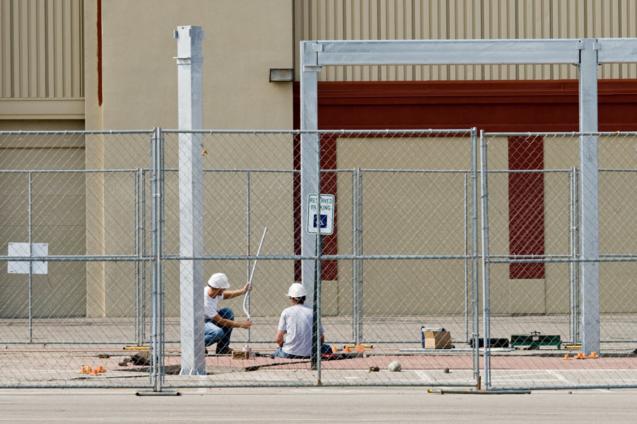
Using Drones in Agriculture
By White Chalk Road|November 28, 2023
In the vast and sun-drenched landscapes of Australia, agriculture forms the backbone of the rural economy and acts as a vital pillar in sustaining the nation's food security. In recent times, the agricultural sector has seen a seismic shift towards incorporating advanced technology, with drones emerging as a particularly transformative tool.
As we continue to develop drone technology, the benefits to the agriculture sector grow even more. This guide will give us a look into these benefits as well as the importance of drones in agriculture.
Understanding the Agriculture Industry
The agriculture industry in Australia is as diverse as it is expansive. It ranges from vast cattle stations in the Northern Territory to the rolling vineyards of South Australia, and the large-scale wheat farms in the Golden Wheatbelt of Western Australia. This sector not only feeds the nation but also serves as a significant export earner, with Australian produce being renowned worldwide for its quality.
The Significance of Agricultural Work
Agriculture is arduous and demanding work. Farmers are at the mercy of the elements, with droughts, floods, and the scorching heat posing constant threats. In addition to these natural challenges, there's a pressing need to enhance yield and reduce waste to feed an ever-growing population. Herein lies the need for innovation – to increase efficiency and resilience in agriculture.
Drones: A Technological Boon for Agriculture
The advent of agricultural drones has revolutionised the farming landscape, marking a significant leap in how agricultural operations are conducted. These high-flying tools have become an integral part of modern agriculture drone solutions, offering a range of applications that boost efficiency, accuracy, and yields.
Agricultural drones are instrumental in detecting and managing crop disease. They can survey vast expanses of farmland, capturing detailed images that reveal the health of crops. With advanced sensors and imaging capabilities, drones can identify areas affected by pests or diseases early on, allowing for timely intervention and treatment. This proactive approach to managing crop health not only saves time and resources but also helps in preserving the overall yield quality.
Another critical application of drones in agriculture is their ability to inspect irrigation equipment through pipeline inspections and monitor watering patterns across large fields. Drones equipped with thermal or multispectral cameras can assess the effectiveness of irrigation systems, identify over or under-watered areas, and even detect leaks or failures in the irrigation infrastructure. By providing precise data on water usage and distribution, drones help farmers optimise their irrigation practices, leading to more efficient water use and healthier crops.
Moreover, agricultural drones play a significant role in helping farmers increase crop yields. Through precision agriculture techniques, drones can gather data on soil health, crop stress, and nutrient levels, enabling farmers to make informed decisions about planting, fertilising, and harvesting. The insights gained from drone surveys allow for tailored crop management strategies, enhancing the efficiency of farming operations.
The drone industry's growth in the agricultural sector is a testament to the value these UAVs bring to farming. They offer a bird's-eye view of fields, which was previously unattainable, and deliver comprehensive data that drives smarter, more informed agricultural practices. As this technology continues to evolve, the potential for further innovations in agriculture drone solutions is vast, promising a future where drones are a staple in farming landscapes worldwide.
Benefits of Drones in Agriculture
Australia's unique climate and geography demand drones that are robust, versatile, and capable of covering large areas. Compliance with the Civil Aviation Safety Authority's regulations ensures that drone operations in agriculture are safe and legal.
Choosing the Right Drone for Agricultural Projects
Not all drones are created equal. Fixed-wing drones, for example, are ideal for mapping large tracts of land, while multi-rotor drones are better suited for precision tasks. Factors such as battery life, payload capacity, and camera resolution are critical considerations.
AUAV: Your Partner in Drone Services
AUAV offers specialised drone services tailored for a range of industries in Australia. Their expertise in handling diverse landscapes and our comprehensive knowledge of the latest drone technology make them the go-to partner for your commercial drone needs.
As we continue to develop drone technology, the benefits to the agriculture sector grow even more. This guide will give us a look into these benefits as well as the importance of drones in agriculture.
Understanding the Agriculture Industry
The agriculture industry in Australia is as diverse as it is expansive. It ranges from vast cattle stations in the Northern Territory to the rolling vineyards of South Australia, and the large-scale wheat farms in the Golden Wheatbelt of Western Australia. This sector not only feeds the nation but also serves as a significant export earner, with Australian produce being renowned worldwide for its quality.
The Significance of Agricultural Work
Agriculture is arduous and demanding work. Farmers are at the mercy of the elements, with droughts, floods, and the scorching heat posing constant threats. In addition to these natural challenges, there's a pressing need to enhance yield and reduce waste to feed an ever-growing population. Herein lies the need for innovation – to increase efficiency and resilience in agriculture.
Drones: A Technological Boon for Agriculture
The advent of agricultural drones has revolutionised the farming landscape, marking a significant leap in how agricultural operations are conducted. These high-flying tools have become an integral part of modern agriculture drone solutions, offering a range of applications that boost efficiency, accuracy, and yields.
Agricultural drones are instrumental in detecting and managing crop disease. They can survey vast expanses of farmland, capturing detailed images that reveal the health of crops. With advanced sensors and imaging capabilities, drones can identify areas affected by pests or diseases early on, allowing for timely intervention and treatment. This proactive approach to managing crop health not only saves time and resources but also helps in preserving the overall yield quality.
Another critical application of drones in agriculture is their ability to inspect irrigation equipment through pipeline inspections and monitor watering patterns across large fields. Drones equipped with thermal or multispectral cameras can assess the effectiveness of irrigation systems, identify over or under-watered areas, and even detect leaks or failures in the irrigation infrastructure. By providing precise data on water usage and distribution, drones help farmers optimise their irrigation practices, leading to more efficient water use and healthier crops.
Moreover, agricultural drones play a significant role in helping farmers increase crop yields. Through precision agriculture techniques, drones can gather data on soil health, crop stress, and nutrient levels, enabling farmers to make informed decisions about planting, fertilising, and harvesting. The insights gained from drone surveys allow for tailored crop management strategies, enhancing the efficiency of farming operations.
The drone industry's growth in the agricultural sector is a testament to the value these UAVs bring to farming. They offer a bird's-eye view of fields, which was previously unattainable, and deliver comprehensive data that drives smarter, more informed agricultural practices. As this technology continues to evolve, the potential for further innovations in agriculture drone solutions is vast, promising a future where drones are a staple in farming landscapes worldwide.
Benefits of Drones in Agriculture
- Precision Agriculture: Drones enable farmers to practise precision agriculture, where they can make informed decisions based on data from drone imagery. This approach maximises yields, reduces costs, and minimises environmental impact.
- Crop Monitoring and Health Assessment: Regular monitoring is crucial for healthy crops, and drones make it possible to obtain real-time information about crop health, soil conditions, and even plant counting, which is essential for inventory and planning.
- Irrigation and Resource Management: Water scarcity is a significant issue in Australian farming. Drones equipped with thermal cameras can identify dry areas and help farmers in planning irrigation systems more efficiently.
- Pest and Disease Control: Drones can detect and isolate affected areas to manage pest outbreaks or the spread of disease. This early detection can save entire crops from potential devastation.
Australia's unique climate and geography demand drones that are robust, versatile, and capable of covering large areas. Compliance with the Civil Aviation Safety Authority's regulations ensures that drone operations in agriculture are safe and legal.
Choosing the Right Drone for Agricultural Projects
Not all drones are created equal. Fixed-wing drones, for example, are ideal for mapping large tracts of land, while multi-rotor drones are better suited for precision tasks. Factors such as battery life, payload capacity, and camera resolution are critical considerations.
AUAV: Your Partner in Drone Services
AUAV offers specialised drone services tailored for a range of industries in Australia. Their expertise in handling diverse landscapes and our comprehensive knowledge of the latest drone technology make them the go-to partner for your commercial drone needs.



